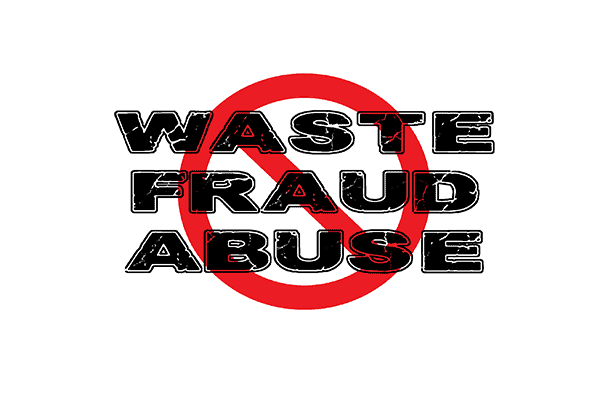Why You Should Care About Healthcare Fraud, Waste and Abuse

An Introduction to Fraud, Waste and Abuse
It’s no secret that American healthcare is costly. In 2017, we spent $3.3 trillion on healthcare (accounting for 17.9% of the Gross Domestic Product)[1], about 31% higher than the next highest per capita spender, Switzerland[2]. By 2026, healthcare costs are projected to balloon to $5.7 trillion[3]. The surge is driven primarily through high pricing in medical services, specialty medicine and increased enrollment and utilization within Medicare and Medicaid. The increase in size and complexity across both government-sponsored programs and commercial plans make them particularly vulnerable to fraud, waste and abuse (FWA).
What exactly is FWA? It can be divided into three distinct categories:
- Fraud: Intentional concealment or deception to gain something of value, often involving the criminal and/or civil (e.g. billing for services at an inflated rate).
- Waste: Excessive use of health services, although not necessarily intentional wrongdoing (e.g. prescribing a medically unnecessary procedure based on comfort level).
- Abuse: Unsubstantiated payment for services, sometimes intentional, exploiting gaps in policy (e.g. misusing codes on a claim).
What Does FWA Cost Us?
The National Health Care Anti-Fraud Association estimates that we lose tens of billions of dollars to fraud[4]each year, and many estimates climb much higher. The Coalition Against Insurance Fraud asserts that we lost $487 billion to fraud and human error in a single year[5], comprising about one-fifth of the total cost of healthcare.
In 2018, the largest multi-agency health fraud takedown in history uncovered an elaborate scheme to distribute opioids and other dangerous narcotics, costing vital Medicare programs $2 billion. The case involved 600 defendants (most disappointingly, many of whom were medical professionals) across 58 federal districts.
Healthcare fraud is a particularly unsettling kind of deceit that can have devastating effects on the most vulnerable patient populations and payer organizations, which is why large-scale regulatory bodies work alongside law enforcement to dismantle the healthcare fraud underworld. Of this branch of the FWA trifecta, at least there are clear heroesand villains.
It gets stickier when you try to target something as ambiguous as waste…where do you start?
Understanding and Demystifying the “Wasteland” for Payers
The good news is, there are ways to root out waste, but it requires a continuous cycle of intervention and standardization. Most payer organizations live in a type of limbo—let’s call it the “Wasteland.”
Although there is an industry-wide push to value-based care to slow rising healthcare spending, traditional fee-for-service models still dominate. In a fee-for-service model, healthcare providers often decide on treatment plans based on their own comfort or preference to minimize exposure to risk or maximize revenue. Value-based care is quite different, because it encourages usage of evidence-based care pathways focused on reducing variation in treatments—ultimately optimizing value and improving quality.
Unsurprisingly, waste comes as standard with provider’s fee-for-service models. The downstream impact of FWA on payer organizations is multi-faceted: it negatively impacts patient recovery, adds to administrative burden and increases the number of unnecessary claims to process and pay out.
To defend against this, payers can implement data analytics solutions, along with robust payment integrity processes to detect, diagnose, reduce and prevent FWA, and finally leave the Wasteland for good.
- Detect:With large bodies of clinical evidence and claims data, analytics can identify anomalies and variances from standardized clinical pathways. For example, by using descriptive and predictive analytics, a payer can use thorough analysis to:
- Identify outliers in claims and claim lines
- Benchmark procedure codes and costs against comparable peer claims
- Identify attributes that most likely contribute to anomalies (e.g., provider specialty, location, type of service, etc.)
- Diagnose:Once an anomaly is detected, inferential analytics can help identify root causes. Waste and abuse may occur due to several inefficiencies in claims and payment design:
- Absent or inadequate medical policies and gaps in adherence
- Product or network design inefficiency
- Inadequate claims edits or adjudication processes
- Data quality or timeliness issues
- Reduce: FWA creates additional strain on processes, resulting in increased downstream administrative costs. By combining inferential and predictive analytics with solid payment integrity process, you can avoid these downstream implications:
- Incorrect approvals and denials, resulting in a higher volume of adjustments and appeals
- Delays in claims pends/holds
- Higher penalties and increased audits
- Prevent:Prescriptive analytics identify necessary corrections to remediate the root causes of FWA. In addition, a robust prescriptive analytical model will incorporate the administrative cost impact of identifying “false positives.” By doing that, you can make informed decisions around whether the expected medical cost savings outweigh the potential administrative costs of incorrectly identifying an anomaly.
Leaving the Wasteland is a process of continuous improvement and playing catchup to providers that are always learning and changing. Analytics models need to keep pace, study, evolve, and adapt. Although FWA comprises a fraction of our overall healthcare costs, it is a strikingly visible drain on precious time and resources that we cannot afford. Elimination of FWA will involve a radical change in behaviors, business models, and regulation. Until that happens, technology and analytics serve as a necessary and critical safety net.
[1]https://www.cms.gov/research-statistics-data-and-systems/statistics-trends-and-reports/nationalhealthexpenddata/nhe-fact-sheet.html
[2]https://www.healthsystemtracker.org/chart-collection/health-spending-u-s-compare-countries/#item-relative-size-wealth-u-s-spends-disproportionate-amount-health
[3]https://www.cms.gov/research-statistics-data-and-systems/statistics-trends-and-reports/nationalhealthexpenddata/nhe-fact-sheet.html
[4]https://www.nhcaa.org/resources/health-care-anti-fraud-resources/the-challenge-of-health-care-fraud.aspx
